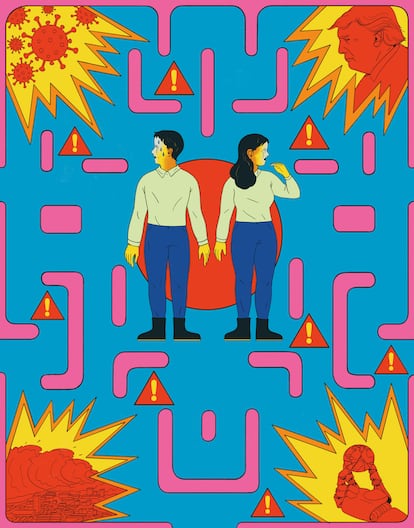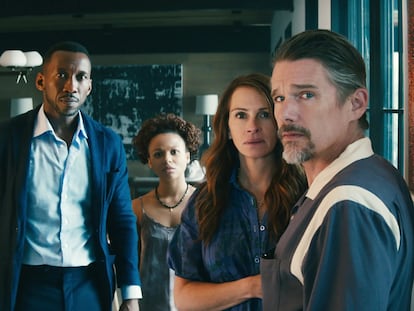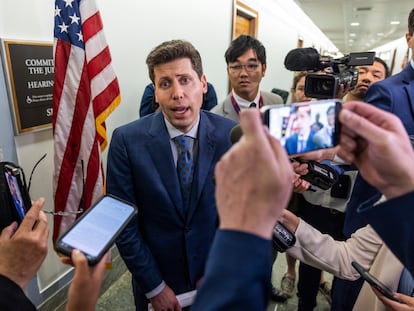The advantages of fear
Some of the things that scare us are innate and universal, while others arise from social and economic change

Fear often gets a bad rap, but it actually serves a purpose. Our ancestors survived by instinctively avoiding dangerous situations, like snakes and lions. Fear acts as a defense mechanism, helping us assess threats and determine a response. According to Enric Soler, a relational psychologist and university professor, fear allows us to evaluate perceived threats and take appropriate action. In fact, “parents often use scary stories to prepare children for real-life dangers,” said philosopher Stephen Asma, the author of On Monsters (2011) and co-host of the Chinwag podcast with actor Paul Giamatti. In other words, we use stories to cope with uncertainty.
If we examine our fears, we soon realize that they are not new or unique. Times change and so do our monsters, which have evolved from mythology and religion into space exploration and scientific advancements. Despite the diversity of human fears, Asma says that “beneath the surface, certain universal fears persist — like snakes, spiders and the dark.”
Are novels and movies featuring rebellious AIs like Terminator and Ex Machina essentially modern retellings of Mary Shelley’s Frankenstein? Such stories shed light on overlooked dangers, much like the thought-provoking Black Mirror Netflix series. They also offer an alternative perspective. In Shelley’s novel, the creature is not the true villain, despite its monstrous appearance. Instead, Frankenstein’s monster is a sensitive and intelligent character who feels betrayed and abandoned by its creator. This highlights a big risk of artificial intelligence — namely, the potential consequences when ethics are neglected during development. Like Elon Musk’s controversial acquisition of Twitter.
This assumes someone actually creates a superintelligence, because our imaginations often outpace technology. We’re still waiting for an evil doctor to bring a corpse back to life or for a company that makes human clones as organ banks for the super-rich. And where are all the job-stealing robots? More importantly, does anyone know if they’ll be here by Monday?
The purpose of fear is not to turn us into fortune-tellers, but rather to assist us in perceiving potential dangers so that we can face them head-on — whether the danger is a malicious algorithm or the apocalypse.
The end-of-the-world fear is nothing new. The first chapter of the Bible starts with a worldwide flood and the last chapter ends with an apocalypse. These are supernatural sources of fear, of course. But chaos can also arise from more earthly sources, such as the economic collapse in Lionel Shriver’s novel The Mandibles (2016); the climatic crisis in J. G. Ballard’s The Drowned World; and pandemics like in the video game and TV series, The Last of Us. One cannot dismiss these dangers as fanciful fiction, says Enric Soler, who reminds us that the war in Ukraine has stoked Cold War fears of a nuclear holocaust in Europe.
These stories reveal the terrifying reality of things beyond our control — we can lose everything, even for something as trivial as forgetting to take a reusable shopping bag to the supermarket. The brave heroes in these stories often aim to regain control by caring for a child who embodies hope, the future and the fate of humanity. But these big concepts often fail to captivate us. We might find characters such as Will Forte in The Last Man on Earth more relatable. Pure luck saves him from the pandemic and he ends up looting abandoned liquor stores.
Everything in moderation, say those annoying people. We fear anarchy, but we also dread the extreme regulation depicted in dystopian novels like George Orwell’s 1984. However, fear today doesn’t stem from an all-powerful dictator like Big Brother, akin to Hitler or Stalin. Instead, it arises from chaotic disruptors like Donald Trump, Javier Milei, and the populist character played by Emma Thompson in the Years and Years miniseries.
Some movies from the eighties and nineties presented a milder version of the apocalypse, what critic B.K. Grant dubbed yuppie horror films. In these films, middle class nobodies are threatened by babysitters (The Hand That Rocks the Cradle), mentally unstable lovers (Fatal Attraction), friends who spike drinks (Bad Influence), and terrifying tenants (Pacific Heights). It’s a tradition of middle-class horror that has extended to the German and Canadian made-for-television movies that my mother likes to watch on Saturday night.
Fear has shifted from haunted houses to mortgages. The horror of economic collapse still lingers, but takes on a different shape. In his book on philosophy and terror, Enrique Lynch discusses a new monster that emerged after the 2008 global financial crisis: the precarious nature of modern life. It’s a monster that enables us to appreciate movies like The Menu, where posh and pretentious plutocrats become the victims.
Another modern fear that has emerged is the belief in curses, although they are no longer associated with the devil but with genetics. Our families are not cursed for stealing a witch’s amulet, but rather because we have two copies of the APOE4 gene, increasing the risk of developing Alzheimer’s. Curses are also used to describe mental health and trauma, as seen in Mike Flanagan’s series, The Haunting of Hill House.
In reality, we lost our fear of the fantastic long ago. In the 1960s, shows like The Munsters and The Addams Family showed us that vampires and werewolves can be funny, while the really disturbing elements are family dynamics and teenage angst (as seen in The Exorcist). Similarly, in the comedy What We Do in the Shadows, the conversations about energy vampires are more unsettling than the blood-sucking ones.
In pandemic horror movies, zombies and infected people are often portrayed as the bad guys. In his book Monster Show, David J. Skal’s writes that these stories initially symbolized the threat of communist propaganda infecting honest citizens. However, this began to shift in 1978 with George A. Romero’s Dawn of the Dead (the sequel to Night of the Living Dead). In Romero’s movie, zombies don’t represent the enemy — they are us. The movie’s setting — a shopping center — depicts how we can become mindless beings (walking corpses?) when we blindly chase materialistic desires.
New York Times cultural critic Chuck Klosterman’s tenth book (aka Chuck Klosterman X) presents another take on zombies. We all are zombie hunters and the zombies are the tasks that we do over and over again but can never finish. Tasks that never die, like zombies. There’s always a report to finish, another meeting to attend, or an email to answer. When you cross something off your to-do list, it’s like plunging a knife into a zombie’s skull — there’s always another one (or a whole herd) right behind it.
The stories we tell ourselves help us comprehend our fears, but they also make us vulnerable to manipulation. As Bernat Castany Prado explains in A Philosophy of Fear, certain politicians thrive on fear. That’s why they vilify, divide, stoke distrust and provoke aggression, all while presenting these behaviors as pragmatic and patriotic. These politicians exploit fear to instill paranoia and xenophobia. Take our stories about aliens from outer space. Skal writes that during the Cold War, the extraterrestrials in Invaders from Mars infiltrated the United States, just like Soviet spies.
Some stories explore this clash of cultures differently. For instance, they view it as an effort to communicate with other civilizations. Sometimes these attempts failed, like in Stanislaw Lem’s Fiasco. Others are more successful, like in Ted Chiang’s Story of Your Life, the basis of the film Arrival (2016). Then there are stories that use satire to address racism and apartheid, like District 9.
Foreigners should not be seen as threats. Political polarization often labels those with different ideas as evil or unintelligent. We view others as outsiders endangering our way of life, assuming the only solution is for them to go home. The lack of another planet to go to is a technical detail we can address later.
In her book Fear: A Cultural History, historian Joanna Bourke shows us how fear prompts us to recognize our lack of control. It can be risky if we avoid critical thought and refuse to take action, opting instead to hide our heads in the sand or spout meaningless slogans. Being afraid is not the same as cowardice. True cowardice lies in failing to confront our fears, in failing to find ways of responding without succumbing to paralysis and division.
Sign up for our weekly newsletter to get more English-language news coverage from EL PAÍS USA Edition
Tu suscripción se está usando en otro dispositivo
¿Quieres añadir otro usuario a tu suscripción?
Si continúas leyendo en este dispositivo, no se podrá leer en el otro.
FlechaTu suscripción se está usando en otro dispositivo y solo puedes acceder a EL PAÍS desde un dispositivo a la vez.
Si quieres compartir tu cuenta, cambia tu suscripción a la modalidad Premium, así podrás añadir otro usuario. Cada uno accederá con su propia cuenta de email, lo que os permitirá personalizar vuestra experiencia en EL PAÍS.
¿Tienes una suscripción de empresa? Accede aquí para contratar más cuentas.
En el caso de no saber quién está usando tu cuenta, te recomendamos cambiar tu contraseña aquí.
Si decides continuar compartiendo tu cuenta, este mensaje se mostrará en tu dispositivo y en el de la otra persona que está usando tu cuenta de forma indefinida, afectando a tu experiencia de lectura. Puedes consultar aquí los términos y condiciones de la suscripción digital.
More information
Últimas noticias
The complicated life of Francesca Albanese: A rising figure in Italy but barred from every bank by Trump’s sanctions
Pinochet’s victims grapple with José Antonio Kast’s rise in Chile
Reinhard Genzel, Nobel laureate in physics: ‘One-minute videos will never give you the truth’
Half of Scotland is in the hands of 420 property owners
Most viewed
- Pablo Escobar’s hippos: A serious environmental problem, 40 years on
- Reinhard Genzel, Nobel laureate in physics: ‘One-minute videos will never give you the truth’
- Why we lost the habit of sleeping in two segments and how that changed our sense of time
- Charles Dubouloz, mountaineering star, retires at 36 with a farewell tour inspired by Walter Bonatti
- The Florida Keys tourist paradise is besieged by immigration agents: ‘We’ve never seen anything like this’











































